
Homebuilder Taylor Morrison Home (NYSE: TMHC) reported Q2 CY2025 results topping the market’s revenue expectations, with sales up 2% year on year to $2.03 billion. Its non-GAAP profit of $2.02 per share was 4.1% above analysts’ consensus estimates.
Is now the time to buy Taylor Morrison Home? Find out by accessing our full research report, it’s free.
Taylor Morrison Home (TMHC) Q2 CY2025 Highlights:
- Revenue: $2.03 billion vs analyst estimates of $1.95 billion (2% year-on-year growth, 3.9% beat)
- Adjusted EPS: $2.02 vs analyst estimates of $1.94 (4.1% beat)
- Adjusted EBITDA: $326.4 million vs analyst estimates of $280 million (16.1% margin, 16.6% beat)
- Operating Margin: 13.6%, in line with the same quarter last year
- Backlog: $2.94 billion at quarter end, down 30% year on year
- Market Capitalization: $6.71 billion
Company Overview
Named “America’s Most Trusted Home Builder” in 2019, Taylor Morrison Home (NYSE: TMHC) builds single family homes and communities across the United States.
Revenue Growth
Reviewing a company’s long-term sales performance reveals insights into its quality. Even a bad business can shine for one or two quarters, but a top-tier one grows for years. Thankfully, Taylor Morrison Home’s 9.1% annualized revenue growth over the last five years was solid. Its growth beat the average industrials company and shows its offerings resonate with customers.
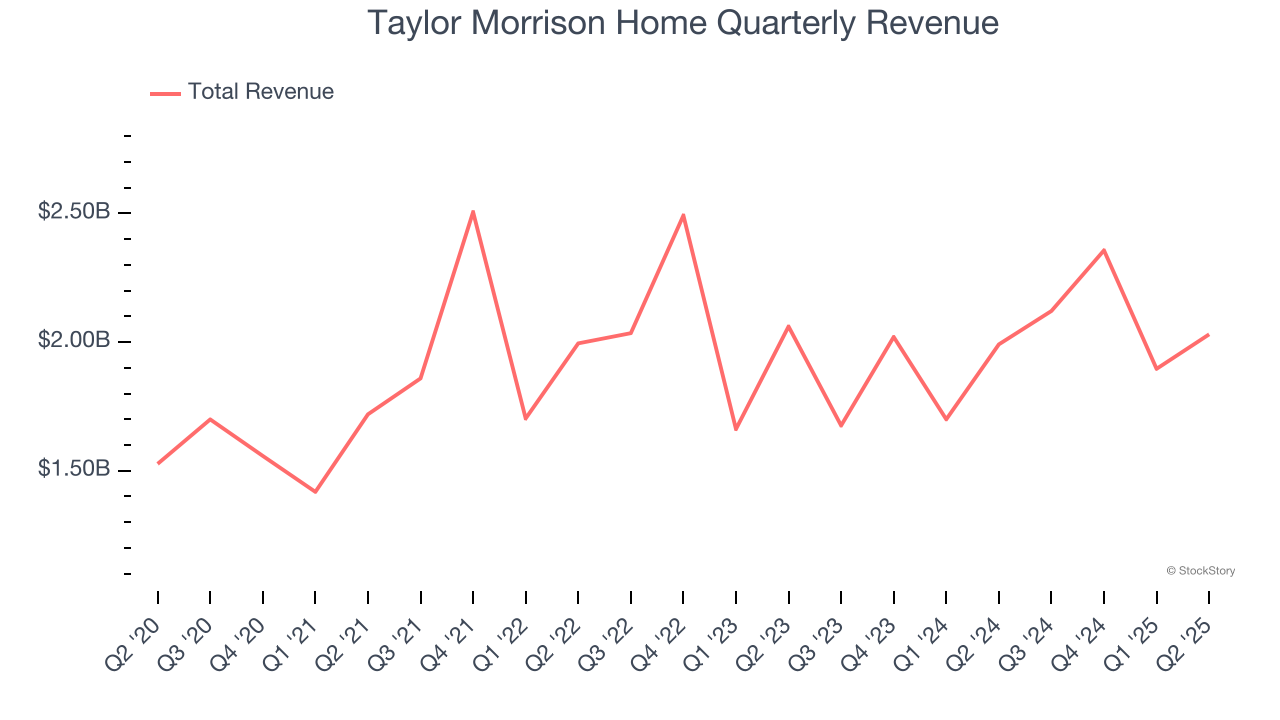
We at StockStory place the most emphasis on long-term growth, but within industrials, a half-decade historical view may miss cycles, industry trends, or a company capitalizing on catalysts such as a new contract win or a successful product line. Taylor Morrison Home’s recent performance shows its demand has slowed as its revenue was flat over the last two years. 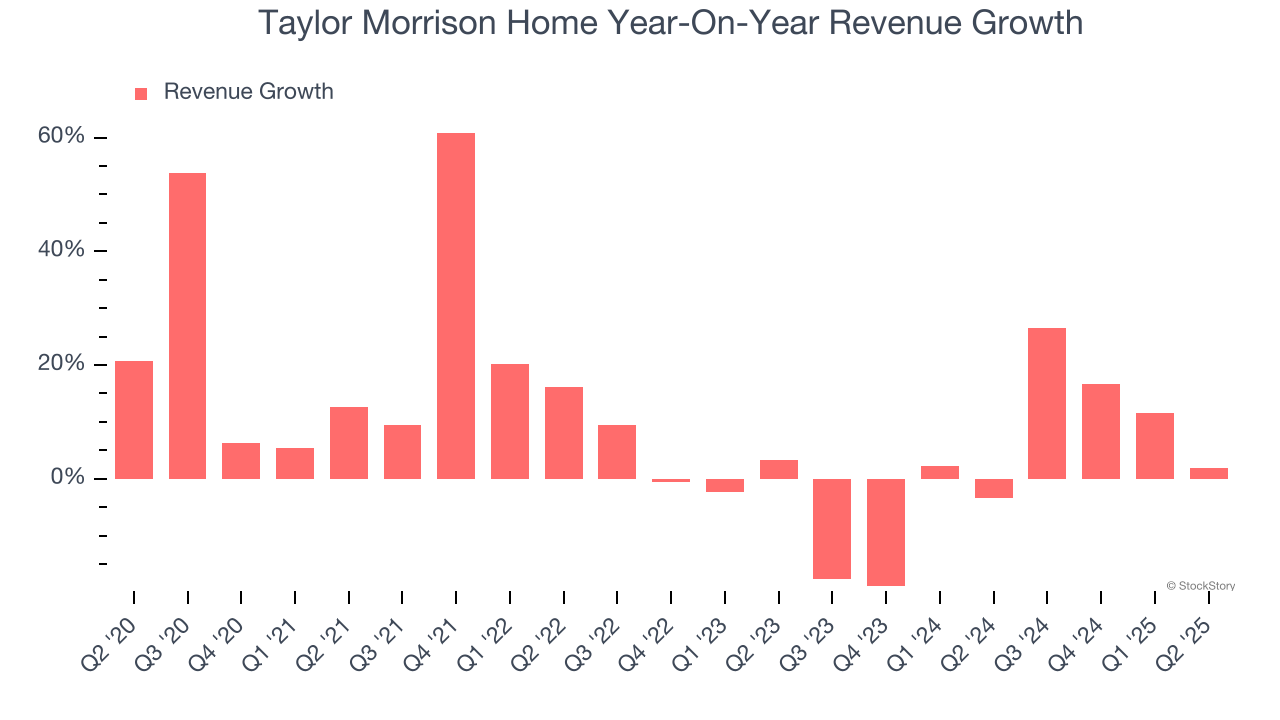
Taylor Morrison Home also reports its backlog, or the value of its outstanding orders that have not yet been executed or delivered. Taylor Morrison Home’s backlog reached $2.94 billion in the latest quarter and averaged 12.7% year-on-year declines over the last two years. Because this number is lower than its revenue growth, we can see the company hasn’t secured enough new orders to maintain its growth rate in the future. 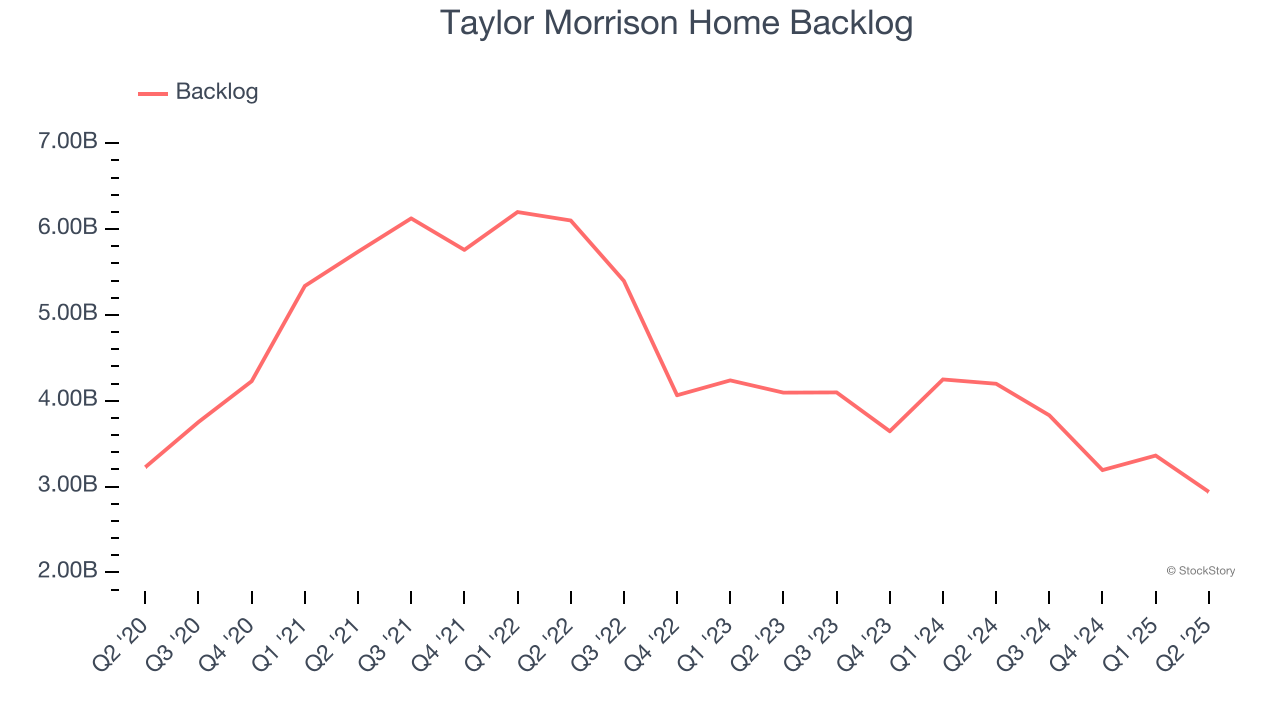
This quarter, Taylor Morrison Home reported modest year-on-year revenue growth of 2% but beat Wall Street’s estimates by 3.9%.
Looking ahead, sell-side analysts expect revenue to decline by 6.3% over the next 12 months, a deceleration versus the last two years. This projection doesn't excite us and suggests its products and services will see some demand headwinds.
Software is eating the world and there is virtually no industry left that has been untouched by it. That drives increasing demand for tools helping software developers do their jobs, whether it be monitoring critical cloud infrastructure, integrating audio and video functionality, or ensuring smooth content streaming. Click here to access a free report on our 3 favorite stocks to play this generational megatrend.
Operating Margin
Taylor Morrison Home has been an efficient company over the last five years. It was one of the more profitable businesses in the industrials sector, boasting an average operating margin of 14.3%. This result was particularly impressive because of its low gross margin, which is mostly a factor of what it sells and takes huge shifts to move meaningfully. Companies have more control over their operating margins, and it’s a show of well-managed operations if they’re high when gross margins are low.
Analyzing the trend in its profitability, Taylor Morrison Home’s operating margin rose by 5.4 percentage points over the last five years, as its sales growth gave it immense operating leverage.
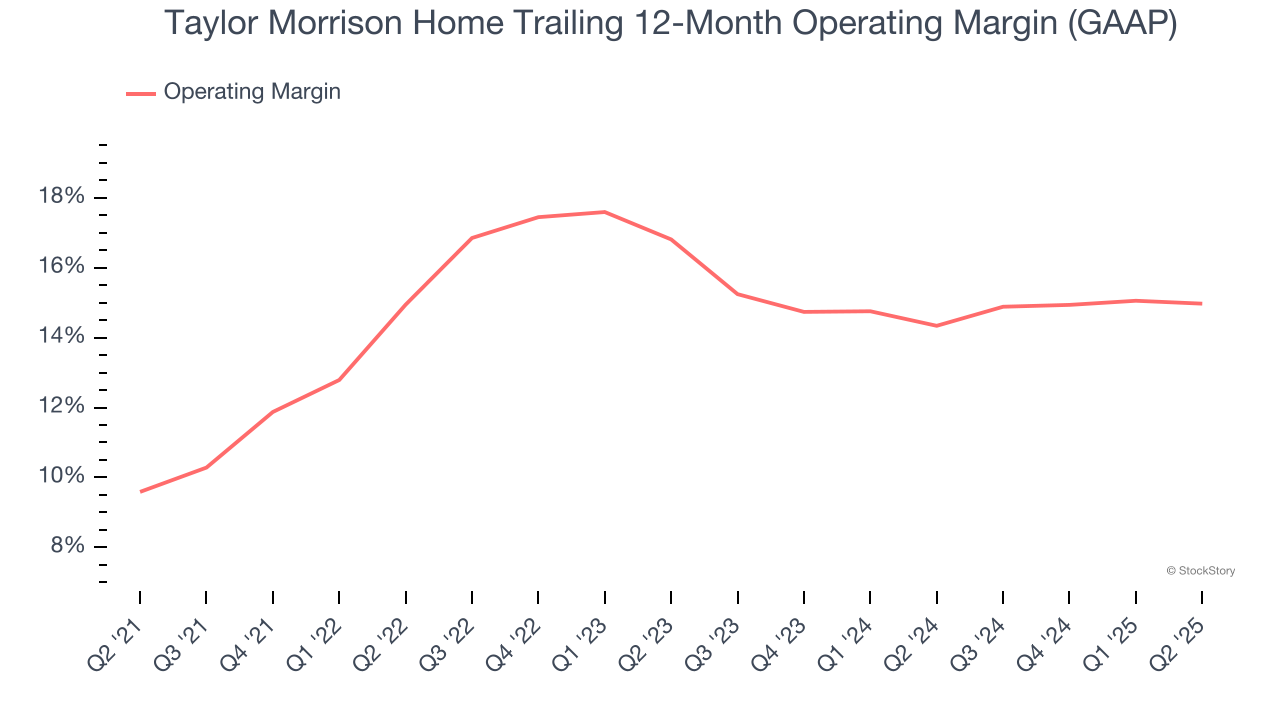
This quarter, Taylor Morrison Home generated an operating margin profit margin of 13.6%, in line with the same quarter last year. This indicates the company’s cost structure has recently been stable.
Earnings Per Share
Revenue trends explain a company’s historical growth, but the long-term change in earnings per share (EPS) points to the profitability of that growth – for example, a company could inflate its sales through excessive spending on advertising and promotions.
Taylor Morrison Home’s EPS grew at an astounding 24.5% compounded annual growth rate over the last five years, higher than its 9.1% annualized revenue growth. This tells us the company became more profitable on a per-share basis as it expanded.
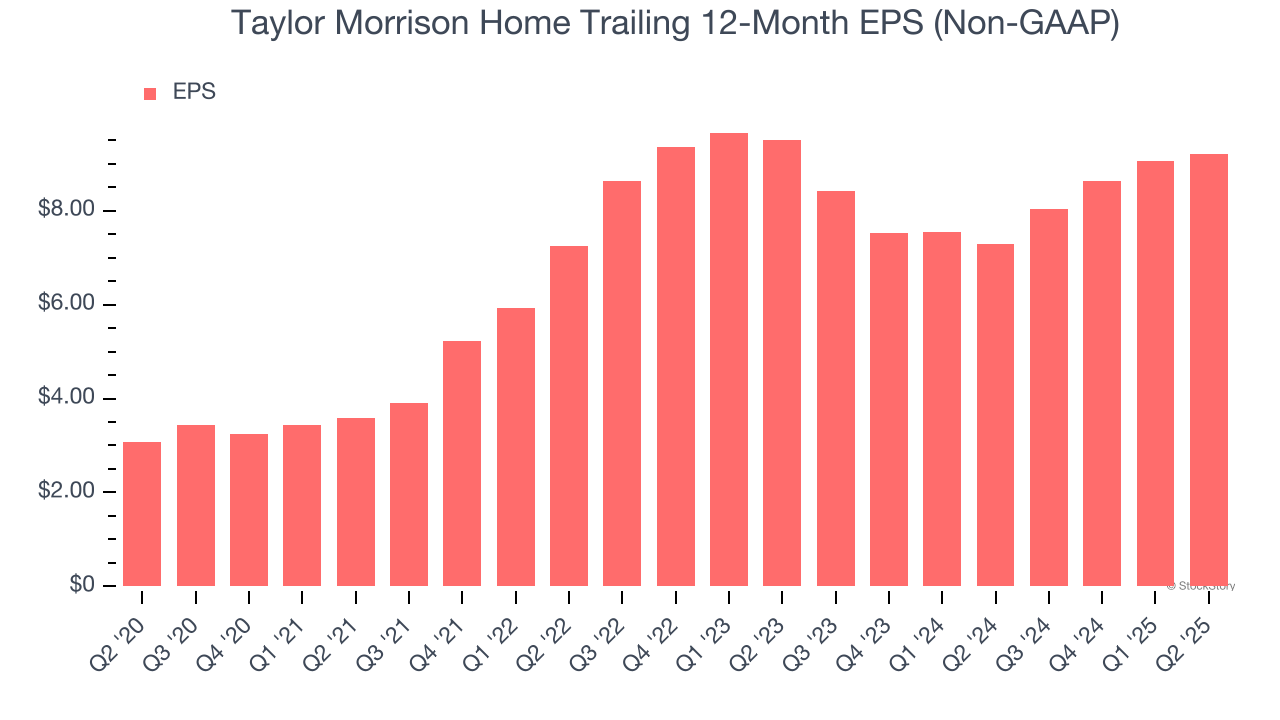
We can take a deeper look into Taylor Morrison Home’s earnings to better understand the drivers of its performance. As we mentioned earlier, Taylor Morrison Home’s operating margin was flat this quarter but expanded by 5.4 percentage points over the last five years. On top of that, its share count shrank by 22.6%. These are positive signs for shareholders because improving profitability and share buybacks turbocharge EPS growth relative to revenue growth. 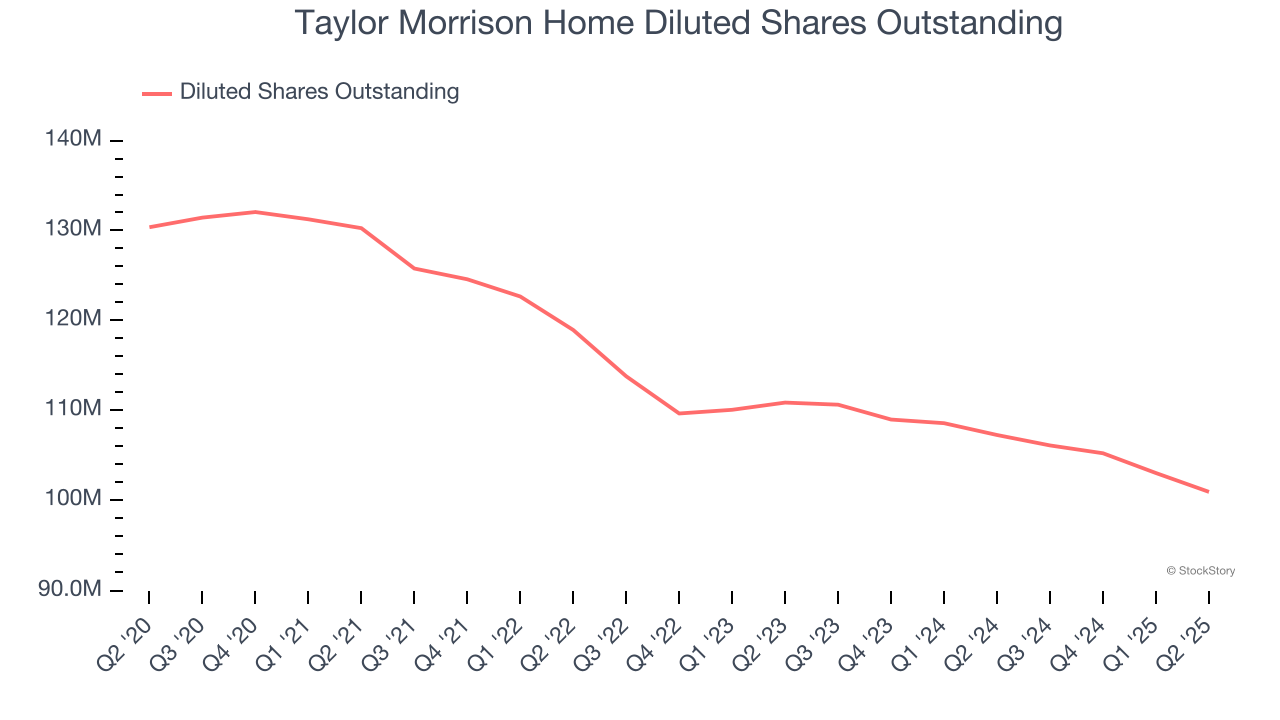
Like with revenue, we analyze EPS over a shorter period to see if we are missing a change in the business.
For Taylor Morrison Home, its two-year annual EPS declines of 1.6% mark a reversal from its (seemingly) healthy five-year trend. We hope Taylor Morrison Home can return to earnings growth in the future.
In Q2, Taylor Morrison Home reported EPS at $2.02, up from $1.86 in the same quarter last year. This print beat analysts’ estimates by 4.1%. Over the next 12 months, Wall Street expects Taylor Morrison Home’s full-year EPS of $9.21 to shrink by 16.8%.
Key Takeaways from Taylor Morrison Home’s Q2 Results
We were impressed by how significantly Taylor Morrison Home blew past analysts’ EBITDA expectations this quarter. We were also excited its revenue outperformed Wall Street’s estimates by a wide margin. On the other hand, its backlog missed. Overall, this print had some key positives. The stock remained flat at $67.07 immediately following the results.
So should you invest in Taylor Morrison Home right now? What happened in the latest quarter matters, but not as much as longer-term business quality and valuation, when deciding whether to invest in this stock. We cover that in our actionable full research report which you can read here, it’s free.







